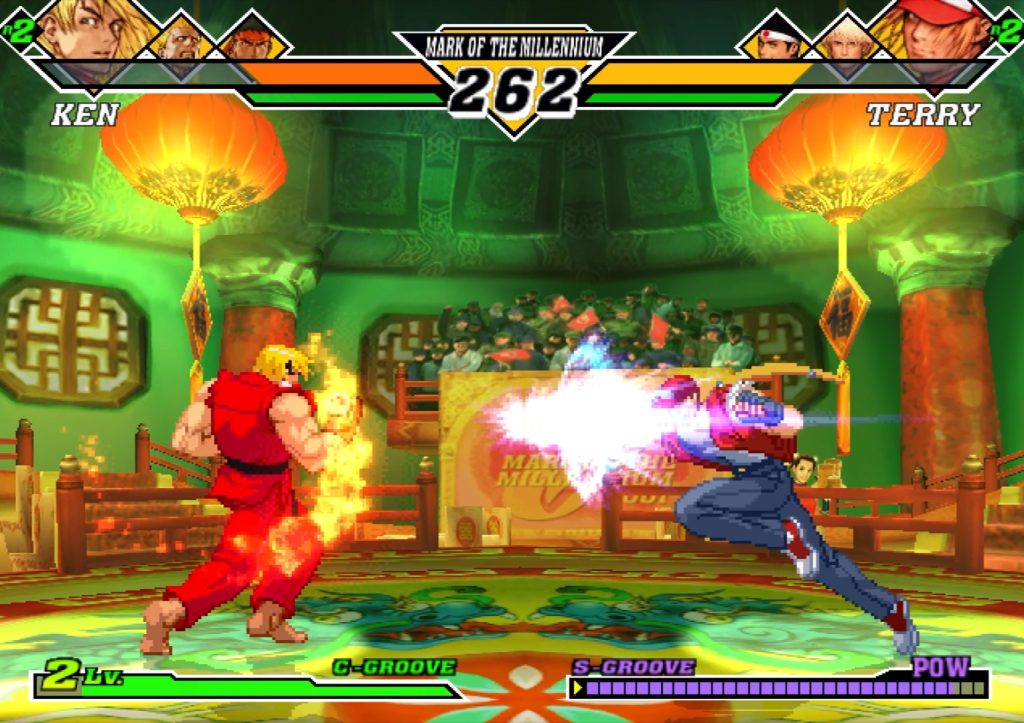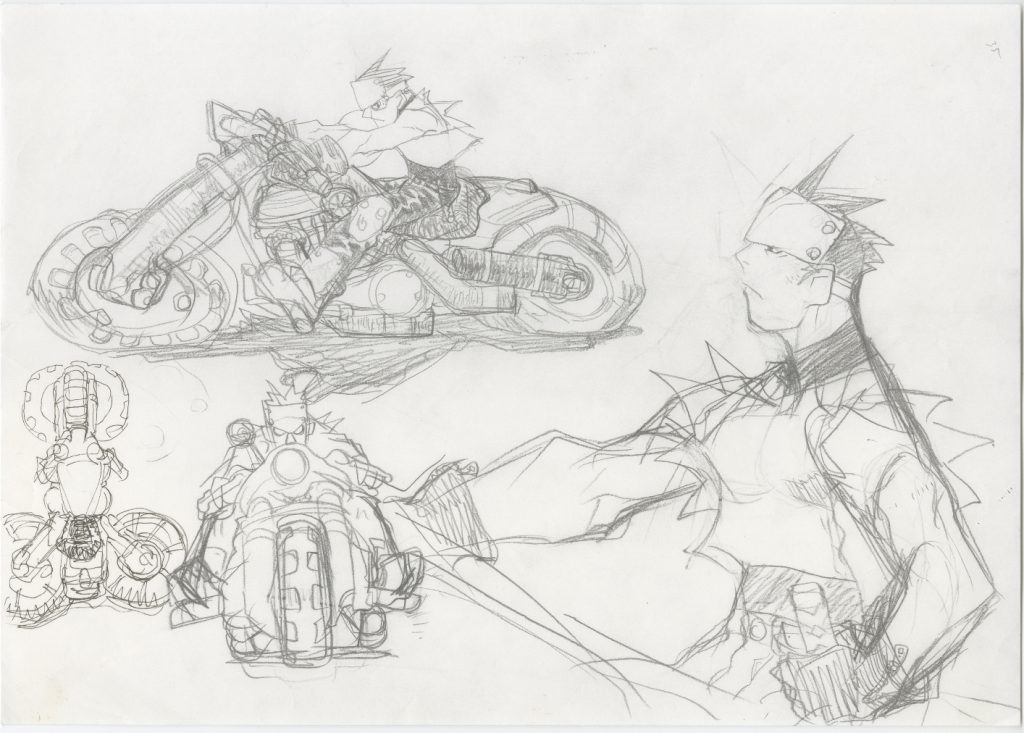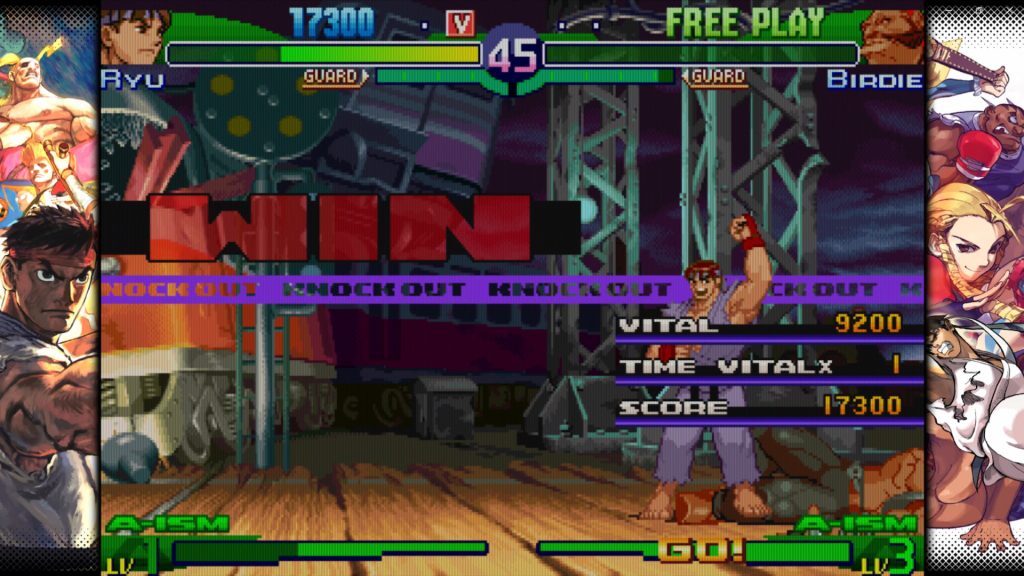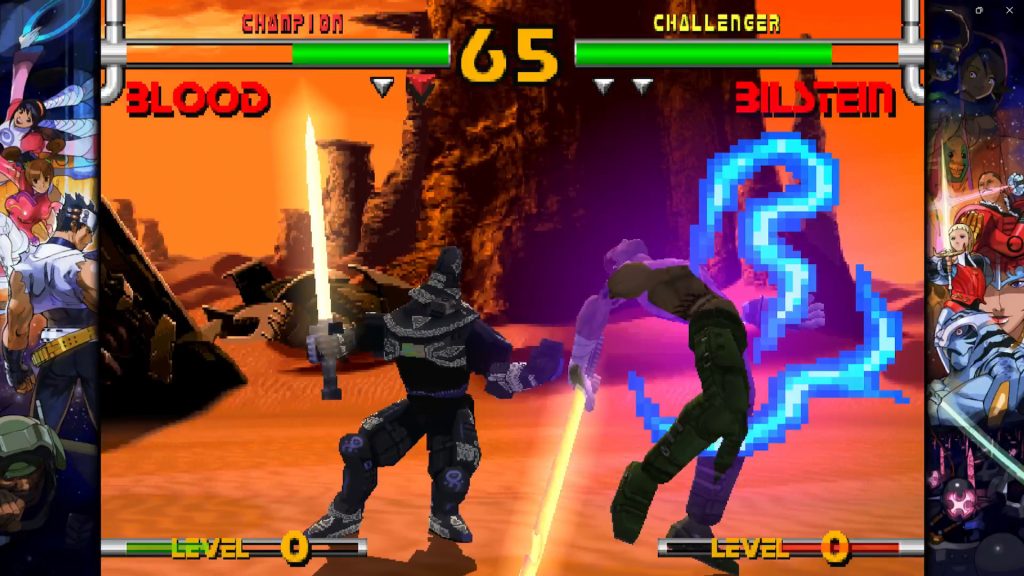Capcom Fighting Collection 2 Review – Edward Falcon Joins the Battle!
Fighting fans rejoice, the latest fighting collection is here and it’s no less impressive than their previous two outings. Capcom Fighting Collection 2 includes eight games: Capcom Vs. SNK 1 and 2, Capcom Fighting Evolution, Street Fighter Alpha 3 Upper, Power Stone 1 and 2, Project Justice, and Plasma Sword (or Star Gladiator 2 as it is called in Japan). Like previous collections, every game here is a port of their arcade versions, albeit with some small additional content and tweaks. A range of convenience features and bonus museum artwork is included as well, forming a competently made package containing cult-classics and fan-favorites from the early 2000s era. Unlike the first Capcom Fighting Collection, this one isn’t dominated by one long-dormant franchise, but has a balanced spread of titles.
Let’s start with the basic features of the collection as a whole, most of which were present in the first Capcom Fighting Collection. All eight games have new training modes built into them that show button inputs and allow you to customize dummy opponents with a variety of parameters. The real highlight of training mode are the hitbox indicators on each fighter. However, hitboxes are exclusive to the four Street Fighter games.

“The real highlight of training mode are the hitbox indicators on each fighter.”
The same suite of convenience features grace this collection as the previous one. Difficulty can be adjusted for each title by eight points, allowing newcomers to complete even the tougher games in the collection. And considering all titles included here are their arcade versions, they each have timers on the character select screens. Well, at least there’s an option to select between four countdown speeds in the settings. Still, it would’ve been nice to have a ‘no countdown’ option as well. Other options include the max amount of rounds, attack power, game speed, the inclusion of secret characters, as well as other settings specific to each particular title.
One returning convenience feature I’m slightly disappointed by is quick save. You’re only given one quick save total throughout the entire collection. So if you want to continue your Project Justice story mode while keeping your single player progress through the other games simultaneously, tough luck. One returning feature I’m not disappointed by, however, are one-button specials. Every title, with the exception of Power Stone 1 and 2, has one-button specials and one-button supers to streamline the rather intimidating combos. The Power Stone games don’t have a vast moveset like the other six in the collection, so it’s fine that those don’t get the one-button special treatment. Of course, for competitive players, one-button specials are omitted in ranked online play.
Speaking of which, the online offerings with this collection are rather impressive thanks to the reworked rollback netcode. Online modes consist of casual, ranked, and custom matches. There’s even a high score challenge where players can climb the leaderboards with their skill. Unfortunately, a big disappointment with online returns from the first collection: there’s still no crossplay between platforms. You think after the criticism the first collection got, they’d figure something out for part two, but nope; you’re stuck playing online matches with others on the same platform. The good thing is that local multiplayer is as smooth as ever, with instantaneous drop in/drop out play on the same console.
[embedded content]
“Extensive galleries return for each title in the collection within Museum mode.”
And for the longtime fighting game fans, extensive galleries return for each title in the collection within Museum mode. There’s an average of 100 pieces of art for each game included here, ranging from promotional posters to highly detailed design documentation and scene scripting. I’m a big fan of these kinds of legacy features in collections, but can’t help wanting a bit more when it comes to the presentation of the galleries. Maybe it’s asking too much, but providing textual insights and commentary on the characters and design docs would’ve been a stellar addition. That’s just one reason among many why Mega Man Legacy Collection remains my favorite collection of the past decade; the presentation of historical context with each gallery piece really got me invested into the series.
Another little pie in the sky wish I have is the ability to download music tracks from the game to a flash drive. The in-game music player features full soundtracks of these games, which is awesome, but the potential is neutered a bit without a download option. Oh well. Adding to the nostalgia further are the inclusion of eight different filters that can be applied to any of the games. They emulate a wide range of CRT monitor types as well as pixel smoothing options and different resolution types. All in all, this collection provides a lot of legacy features for hardcore fans to get excited about. I just wish there was more commentary and explanation provided to better explain that rich history.
Now on to the games themselves. This collection has slightly less niche titles than the first one, with cult classics like Power Stone and Street Fighter Vs SNK debuting on modern platforms for the first time. The previous collection included two more games than the eight featured here, and we still don’t get Street Fighter III included. Oh well, there’s always Capcom Fighting Collection 3 for the other bucket list games, right? All the games here are the arcade port versions featuring none, or very little, of the console additions and extras. As we’ll see, some games are affected by this more than others, with Project Justice, for example, retaining its robust Story Mode, but most ditching their console modes entirely. Though this collection features less games than Capcom Fighting Collection 1, what’s here is more substantial and beloved than the first collection’s offerings. I mean, CvS and Power Stone are well worth the price of admission alone for many fighting game fans.

“The central mechanic that differentiates Capcom Vs SNK from other fighting games is the team-based ratio system.”
Capcom Vs SNK 1 and 2 are here in all their arcade port glory. Unlike, say, Power Stone, the original arcade versions of CvS have less input lag and load times than their console versions. The central mechanic that differentiates Capcom Vs SNK from other fighting games is the team-based ratio system. It’s quite fun to customize your team in these games. Think of ratios as power rankings, with four ratios being the max threshold for a team. This allows players to set up 1v1 matches by choosing a four-ratio fighter, or go all-in with a team of four one-ratio fighters across the two franchises.
Capcom Vs SNK 2 has the more robust iteration of the ratio and groove systems but caps a team to three fighters instead of CvS 1’s four. Unlike CvS 2 fixed ratios, players get full freedom on how many ratio points to attribute to each fighter. What’s poetic about CvS 2 in particular is it was the first fighting game to feature supported cross-platform online play between the PS2 and Dreamcast with the use of KDDI multi-matching. Good luck convincing players that it was possible to have cross-plat support in 2001 but not in 2025 with this collection. What’s cool about CvS 2’s inclusion in this collection is the addition of the EO (easy operation) standard version. There’s also a lot of different EX settings to fiddle with including secret fighters like Evil Ryu and a newly remixed sound setup.
Next up we have the black sheep of the collection: Capcom Fighting Evolution. For one, the load times in between bouts is noticeably longer than other titles in this collection. Another point of critique is the lackluster stage backgrounds and music.
I admit that I find the game rather charming, especially regarding the different styles of play representing the fighters’ respective franchises. I mean, there are no less than six unique fighting styles represented here, which can lead to some chaotic, and broken, matches. Still, there’s no denying the level of quality is lower here than the masterful stage design and performance of the two Capcom Vs SNK titles. This collection adds two new playable fighters who were previously just bosses within Capcom Fighting Evolution, so that’s a neat addition specific to this collection.

“Street Fighter Alpha 3 Upper most represents classic Street Fighter out of the various games here.”
Street Fighter Alpha 3 Upper (there’s a mouthful) is the last of the 2D fighting games in this collection. The unique mechanic with this game is the ‘ism’ combo styles, with X-ism being the more simplified Street Fighter 2 style of the three. There’s no double tap run or dodge at all here, which I admit impacted my enjoyment a tad. Since this is the arcade version, there’s no World Tour mode that the console versions enjoyed. What we do get for the first time are playable Shin Akuma and Final M. Bison fighters. Street Fighter Alpha 3 Upper most represents classic Street Fighter out of the various games here, so if you’re just seeking some old-fashioned 1v1 bouts, this game will satisfy.
Now for something completely different, the two Power Stone games. If you’re totally unfamiliar, think 3D Super Smash Bros. and you have the right idea. Power Stone 1 is a ton of fun that gamers of any skill level can enjoy. The way you interact with the 3D stages really makes Power Stone stand out from other fighting games. You can pick up various props in the stage and just toss it at opponents, as well as use a litany of items from rocket launchers to swords. The namesake of the game is the transformations from collecting three power stones in the stages. Hitting your opponent hard enough ejects their stone and gets you ever closer to a devastating transformation. There’s not a lot of complexity with combo chains or super meters here. No, most of the strategy lies in how you use the environment acquire power stones. There is a notable drawback with this version, though. The arcade version lacks the Adventure Mode of the beloved Dreamcast version, but like other games in this collection adds two new fighters that were previously bosses.
Now onto the sequel. Since this is the arcade version of Power Stone 2, there’s only the single mode available to play: the four-player ‘castle-climb’ set of matches. Even the training ‘mode’ hardly counts as truly separate since it’s just the training settings overlaid over the castle-climb matches. The console version’s item store and Adventure Mode are omitted here, completely negating all the money you accumulate through the castle. The silver lining is the bundle of non-arcade features like custom match rules and last man standing. But yeah, for me, the real drawback from Power Stone 1 is the forced four-player bouts. Power Stone just doesn’t work as good with more than two players because attacks track to the nearest fighter, which makes team play frustrating due to the friendly fire. Still, the arenas are far more dynamic than the first game with auto-scroll stages and obstacles like boulders and bosses dotting progression. Power Stone 2 is a very fun and frenetic game, but the arcade version’s lack of modes is disappointing.
Project Justice is the only game in this collection with a full story mode, and it just so happens to be my favorite game in the collection. Each school team has their own storyline, portrayed through manga styled text boxes amid scene backdrops, and dynamic 3v3 team-based play featuring some truly zany squad attacks, many of which are uniquely tailored to the team you choose. There’s just a lot of polish in the animations and smooth controls here that make this a must-play game in the collection. And for the curious, no, this version doesn’t include the fighter creator from the Dreamcast version, but it does have pre-made fighters from the creator tools at least.

“Plasma Sword: Nightmare of Bilstein is what happens when a fighter goes full sci-fi with their 3D fighters.”
The final game in this collection is another 3D fighter by the name of Plasma Sword: Nightmare of Bilstein. The emphasis on lightsabers…I mean, plasma weapons here is amusing, giving the game a Soul Calibur kind of flair. The game controls smoothly and features a wide range of combos and special attacks, lending it some good replay value. Though, the single-player Arcade Mode doesn’t have much of a story, it does have a cool opening cinematic and some neat sci-fi stages to fight through. Like the other games in the collection, two new fighters are playable for the first time here.
All in all, Capcom Fighting Collection 2 is a substantive library of beloved titles in the fighting genre. They’re all optimized well and feature rollback netcode with online play accompanied by a suite of quality of life features. For those who enjoyed the first Capcom Fighting Collection, this second one is a no-brainer. The two Capcom V. SNK games and Project Justice offer enough quality team-based gameplay to make up for the collection’s other shortcomings.
This game was reviewed on the PlayStation 5.


Comments are closed.